Family : Sciaenidae

Text © Giuseppe Mazza

English translation by Mario Beltramini
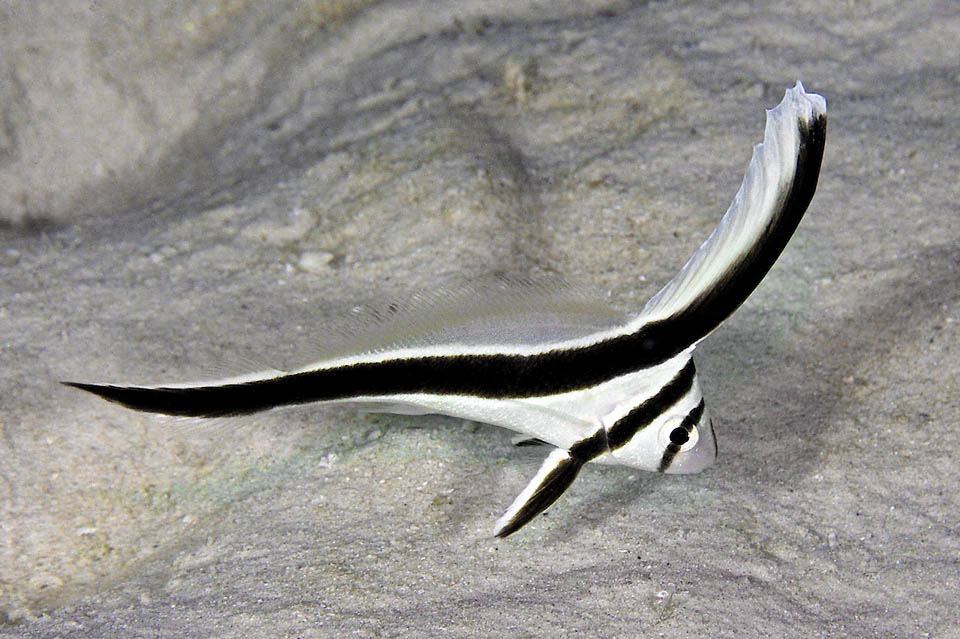
Called Jack-knifefish, Eques lanceolatus is a Caribbean species that reaches the southern coasts of Brazil © Allison & Carlos Estape
Eques lanceolatus(Linnaeus, 1758), also called Jack-knife fish due to its funny look, belongs to the class Actinopterygii, the ray-finned fishes, to the order Perciformes and to the family Sciaenidae.
The etymology originates from Latin: with the term Eques it evokes a horse, whilst the specific lanceolatus, spear-shaped, refers to its sharp and tapered appearance, decidedly unusual.
Zoogeography
Eques lanceolatus is a fish of western Atlantic with a range overlapping the analogous Eques punctatus but wider towards the south. In fact, it is present, beyond the Bermudas, in Florida, Mexico, Antilles and Venezuela, and even on the southern coasts of Brazil.
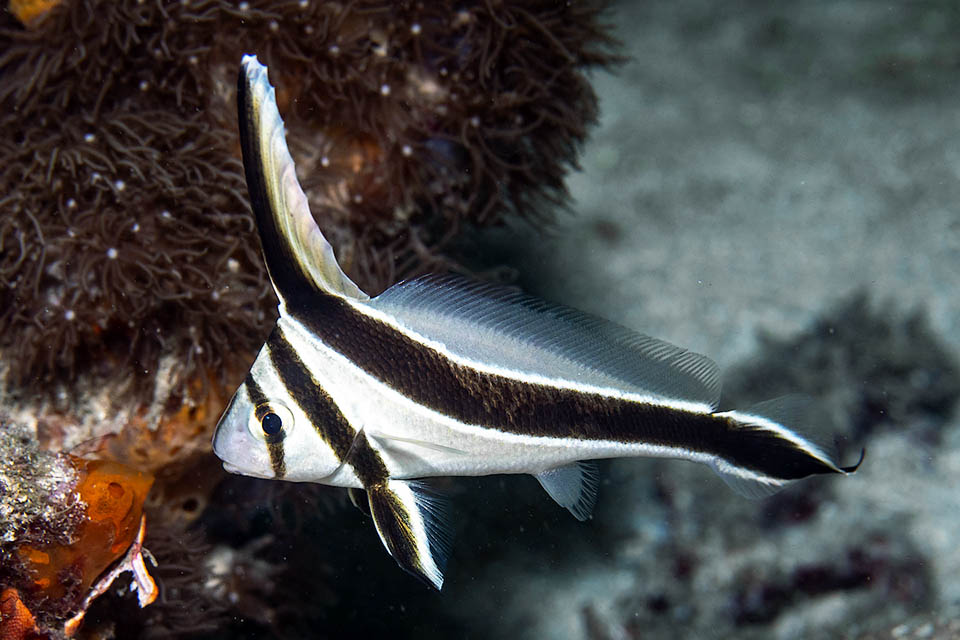
The livery shows three dark brown bands, almost black, white edged. The first crosses vertically the eye, the second begins from the nape and reaches the fore part of the pelvic, whilst the last, wider, begins on the outer side of the first dorsal fin and goes along the whole body reaching the extremity of the caudal fin © Allison & Carlos Estape
Ecology-Habitat
Like the latter, it spends most of the day hidden in. grottoes and crevices on the overjangs of the reefs, usually. between 10 and 60 m of depth, but when it gets dark it moves on the sandy and muddy seabeds looking for preys.
Morphophysiology
It may reach the length of 25 cm, even if its current length is of about 15 cm.
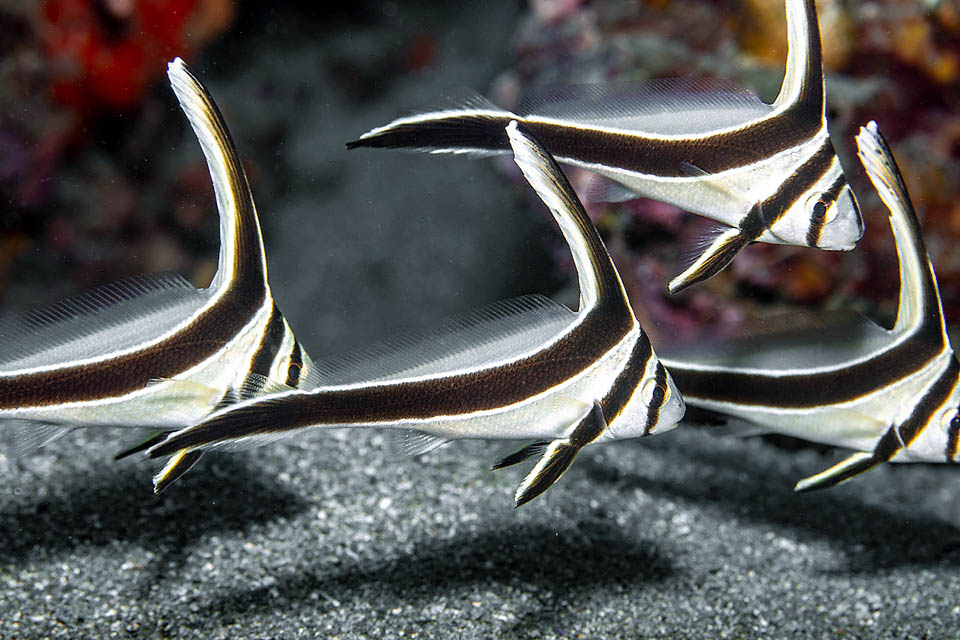
Like for Eques punctatus, to which resembles, the eggs and larvae are planktonic © Allison & Carlos Estape
The body, with the back very curved in relation to the belly, tapes towards the tail. The mouth, almost horizontal under a roundish snout, has on both jaws rows of villiform teeth bigger on the outer side of the upper one. It has 16-18 gill rakers, short and robust. The operculum is forked above and the preoperculum is almost smooth.
There are two dorsal fins. The first, very tall and pointed, has 13 spiny rays; the second, elongated, has 47-55 soft rays protected at the base by a thick sheath of scales. The anal has 2 spiny rays and 16 unarmed; the pectoral ones have 15-6 soft rays.
Like in Eques punctatus, and usually in the Sciaenidae, the swim bladder can be made to vibrate to emit a dull sound similar to that of a drum.
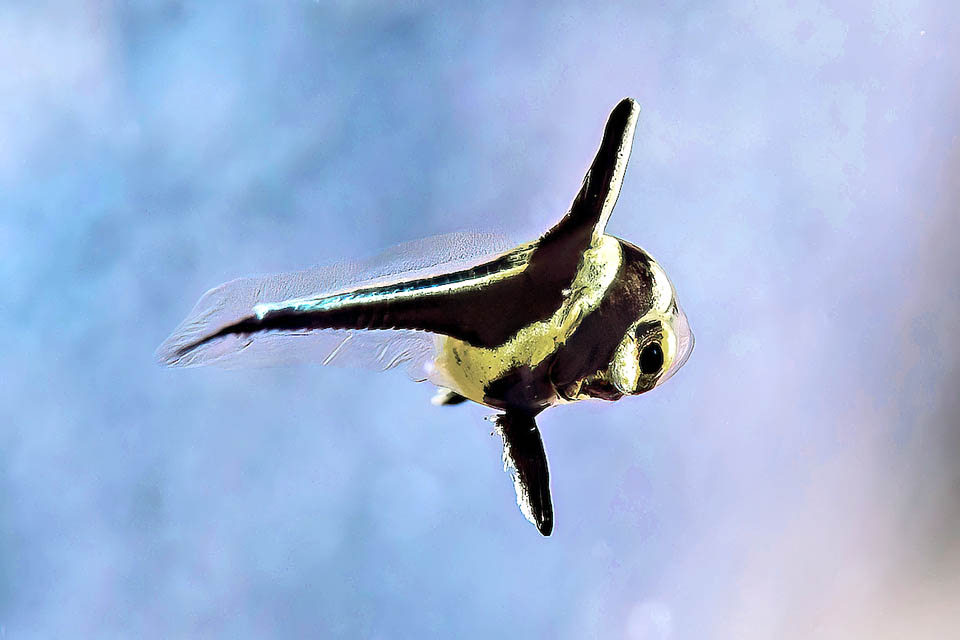
This is one of the first juvenile stages. The body, that then elongates, has often yellowish hues © Allison & Carlos Estape
The very clear grey livery displays three dark brown bands, almost black, with white edges.
The first crosses vertically the eye, camouflaging the head; the second starts from the nape and after the operculum and the chest reaches the fore part of the pelvic fins; the third one, wider, begins on the outer side of the first dorsal fin and goes along the whole body reaching the extremity of the caudal fin.
The juveniles, who have a slightly yellowish background, have the same nastriform appearance as Eques punctatus, but distinguish because they, instead of a dark spot on the snout, have between the eyes one characteristic black line that fades to finally disappear with age.
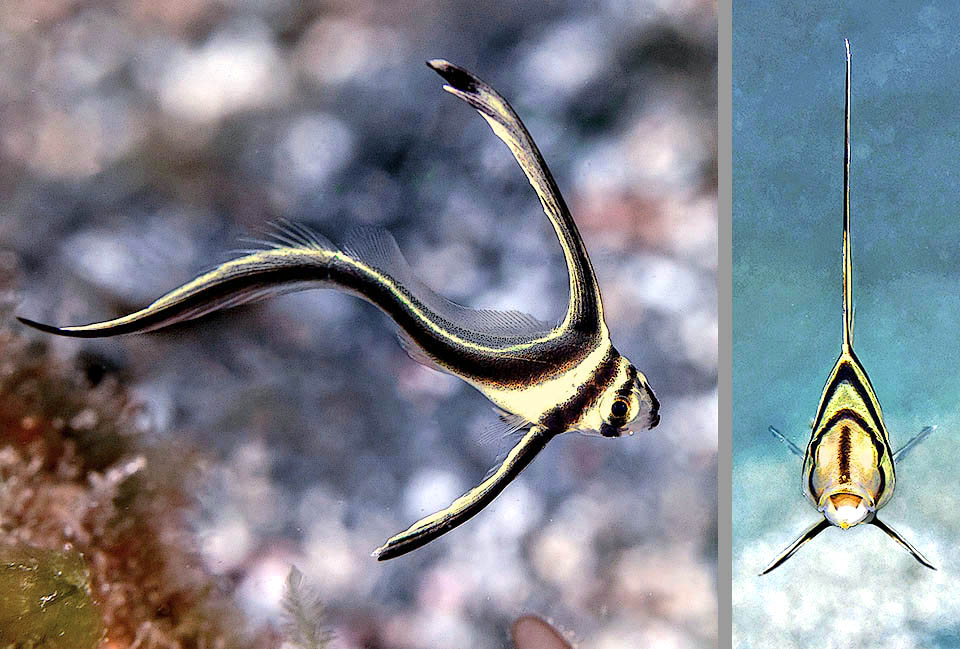
It’s almost the same, due to its nastriform shape, of the juveniles of Eques punctatus, but has among the eyes a characteristic band line © Allison & Carlos Estape
Ethology-Reproductive Biology
At sunset Eques lanceolatus leaves its den and moves looking for small crabs, shrimps, polychaete worms, gastropod mollusks and, if nothing better is available, for debris.
The eggs and the larvae are pelagic. The juveniles grow up hidden among the corals, taking shelter often among the spines of the sea urchins.
The flesh of the Jack-knifefish is good and when it gets into the nets locally ends up on the local tables despite the modest size and the possible risk of ciguatera, a serious poisoning linked to the diet of these fishes.
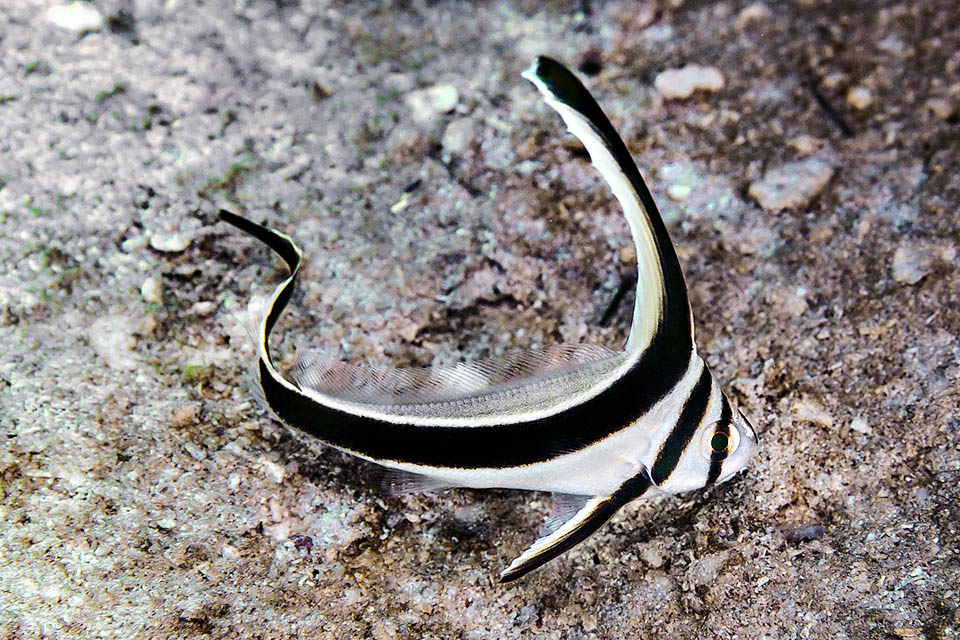
In the subadults the ribbon reduces a lot and the livery is very similar to parents. Eques lanceolatus is not an endangered species © Allison & Carlos Estape
The resilience of the species is excellent, with a possible doubling of the population in less than 15 months, and the fishing vulnerability, very low, marls just 15 on a scale of 100.
Although sometimes hunted for the aquariums, Eques lanceolatus therefore appears in the Red List of the endangered species as “Least Concern”.
Synonyms
Chaetodon lanceolatus Linnaeus 1758; Equetus lanceolatus (Linnaeus,1758); Eques americanus Bloch, 1793; Eques balteatus Cuvier, 1829.
→ For general information about FISH please click here.
→ For general information about BONY FISH please click here
→ For general information about CARTILAGINOUS FISH please click here.
→ To appreciate the BIODIVERSITY of BONY FISH please click here.
→ To appreciate the BIODIVERSITY of CARTILAGINOUS FISH please click here.
